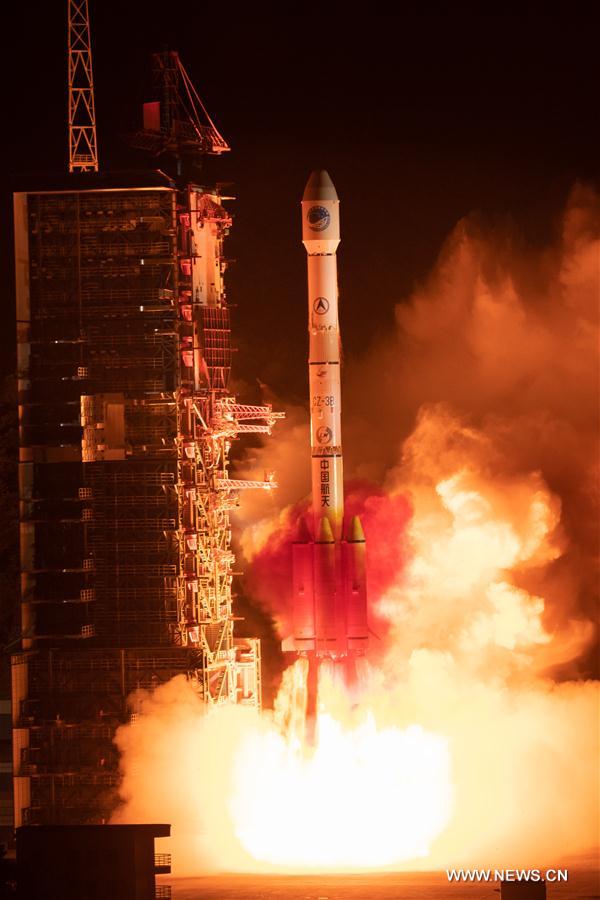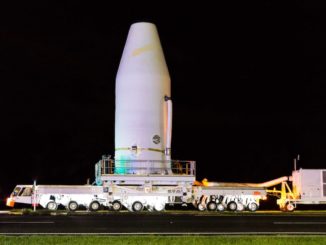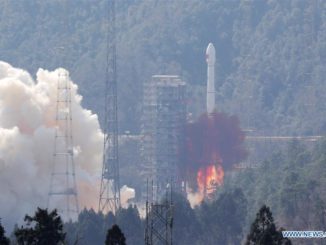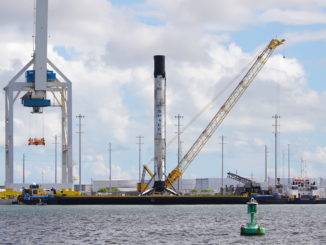
Another satellite to join the China’s independent global navigation network successfully launched Saturday from the mountainous Xichang spaceport in the southwest of the country.
The Beidou navigation satellite lifted off at 1441 GMT (10:41 a.m. EDT) Saturday from Xichang aboard a Long March 3B rocket, according to the China Academy of Launch Vehicle Technology, the state-owned design and manufacturing group in charge of most of the country’s Long March launcher family.
Liftoff occurred at 10:41 p.m. Beijing time, and the Long March 3B delivered the Beidou navigation payload into an elliptical transfer orbit ranging between 136 miles (220 kilometers) and 22,237 miles (35,787 kilometers), with an inclination of 28.5 degrees to the equator, according to U.S. military tracking data.
The Beidou spacecraft is heading for an inclined circular geosynchronous orbit nearly 22,300 miles (35,800 kilometers) above Earth, with a track oscillating between 55 degrees north and south of the equator during each 24-hour orbit. The satellite will use its on-board thrusters to raise the perigee, or low point, of its orbit to the correct operating altitude, and adjust its orbital inclination to enter the Beidou constellation.
In that orbit, the spacecraft will complete one orbit around the Earth at the same speed of the planet’s rotation.
The Beidou fleet is China’s analog to the U.S. military’s Global Positioning System. When completed, the Beidou constellation will provide independent positioning and timing services worldwide free of charge, joining the GPS network, Russia’s Glonass fleet, and Europe’s Galileo program as the only global navigation satellite systems in operation or deployment.
When fully deployed by the end of 2020, the Beidou fleet will consist of 35 satellites, including 27 spacecraft in medium Earth orbit more than 13,000 miles above the planet and eight spacecraft in geosynchronous orbit, with five over the equator and three others in inclined orbits that swing between 55 degrees north and south latitude.
With Saturday’s mission, China has launched 44 Beidou satellites since 2000, including test models no longer in operation, and previous-generation spacecraft that provided regional navigation coverage over Chinese territory and neighboring regions.
Beidou satellites launched on 10 Long March rocket flights last year, and Saturday’s flight marked the first Beidou deployment of 2019.
In the past, China launched Beidou satellites heading for inclined geosynchronous orbits on a more southeasterly trajectory from Xichang for separation directly into a 55-degree inclination orbit. Chinese officials said the change introduced with Saturday’s launch allows Beidou satellites heading for inclined and equatorial geosynchronous orbits to use the same design, allowing for streamlined production of the spacecraft in factories.
According to the state-run Xinhua news agency, China plans to launch between eight and 10 Beidou satellites this year.
Email the author.
Follow Stephen Clark on Twitter: @StephenClark1.



